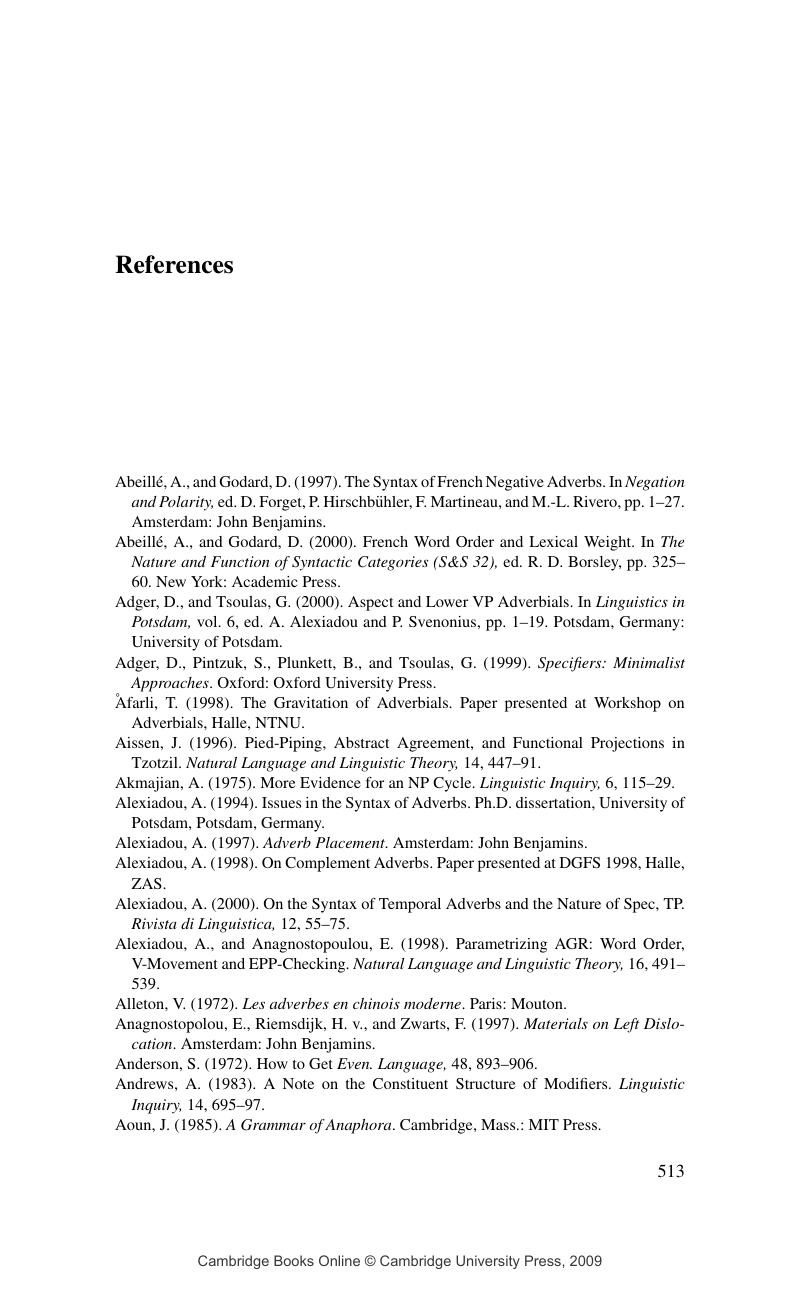Book contents
- Frontmatter
- Contents
- Acknowledgments
- 1 Introduction
- 2 The Semantics of Predicational Adverbs
- 3 The Scopal Basis of Adverb Licensing
- 4 Arguments for Right-Adjunction
- 5 Noncanonical Orders and the Structure of VP
- 6 Event-Internal Adjuncts
- 7 Adjunct Licensing in the AuxRange
- 8 Adjuncts in Clause-Initial Projections
- 9 Conclusions and Prospects
- Notes
- References
- Name Index
- Languages Index
- Subject Index
- References
References
Published online by Cambridge University Press: 12 October 2009
- Frontmatter
- Contents
- Acknowledgments
- 1 Introduction
- 2 The Semantics of Predicational Adverbs
- 3 The Scopal Basis of Adverb Licensing
- 4 Arguments for Right-Adjunction
- 5 Noncanonical Orders and the Structure of VP
- 6 Event-Internal Adjuncts
- 7 Adjunct Licensing in the AuxRange
- 8 Adjuncts in Clause-Initial Projections
- 9 Conclusions and Prospects
- Notes
- References
- Name Index
- Languages Index
- Subject Index
- References
Summary

- Type
- Chapter
- Information
- The Syntax of Adjuncts , pp. 513 - 532Publisher: Cambridge University PressPrint publication year: 2001



